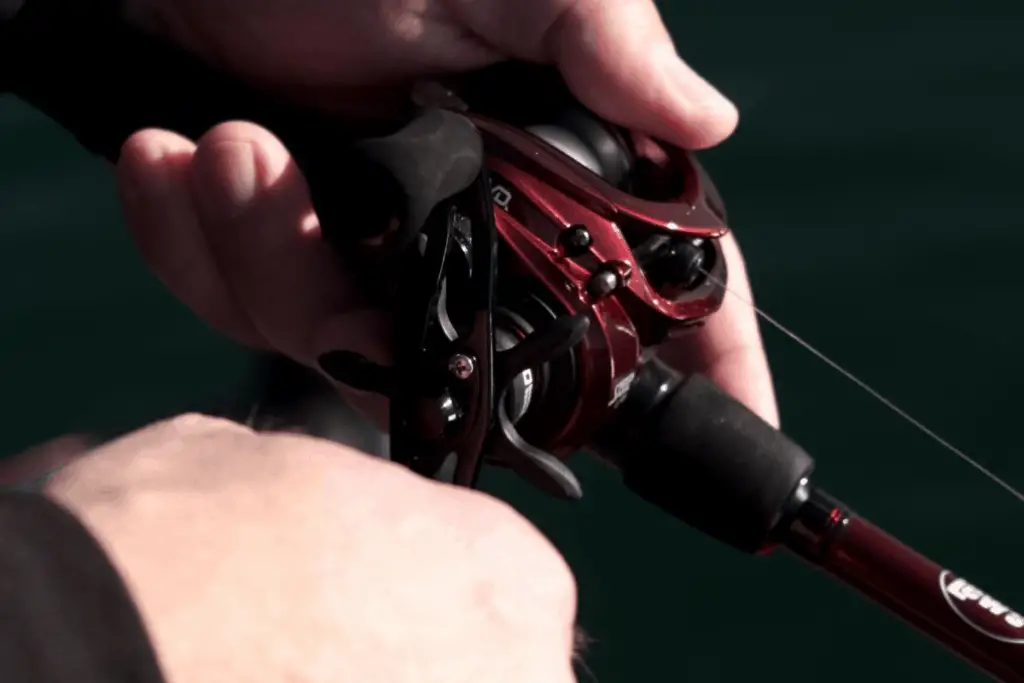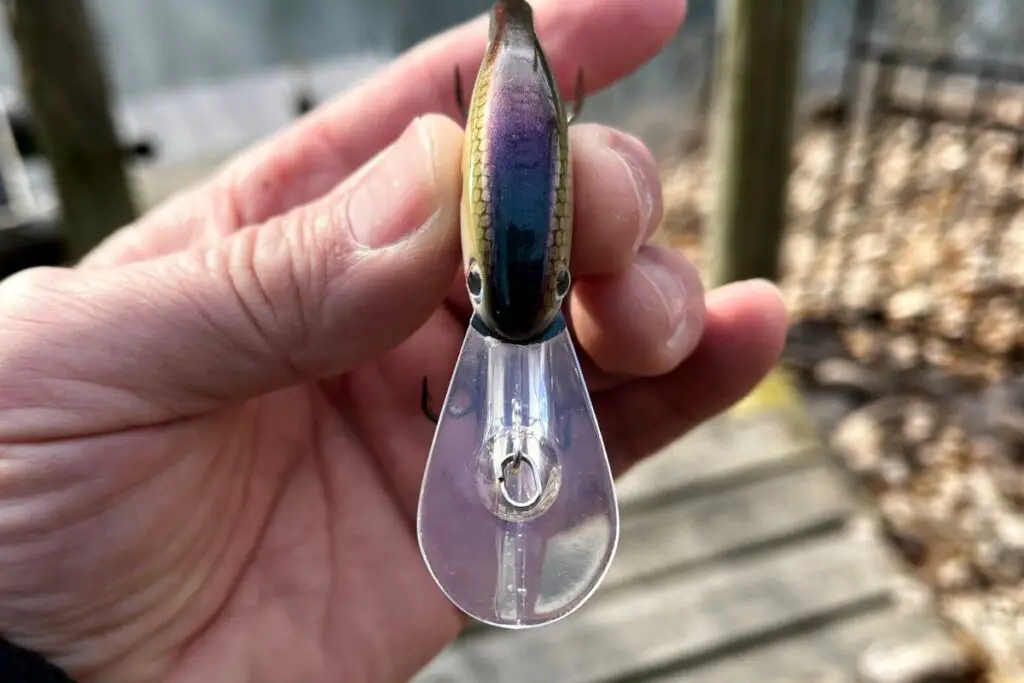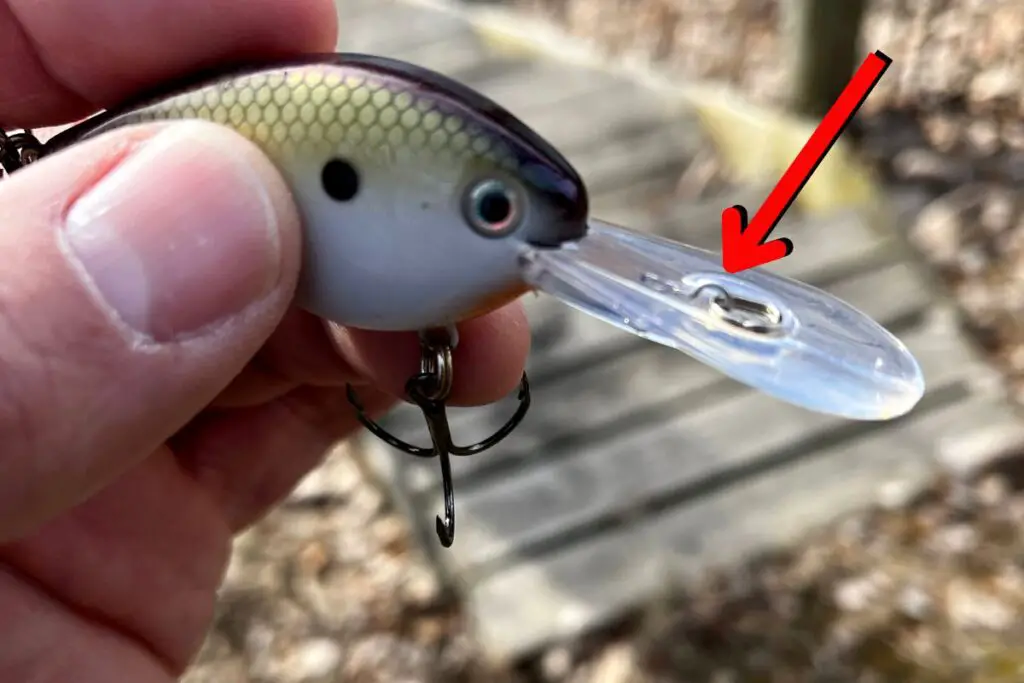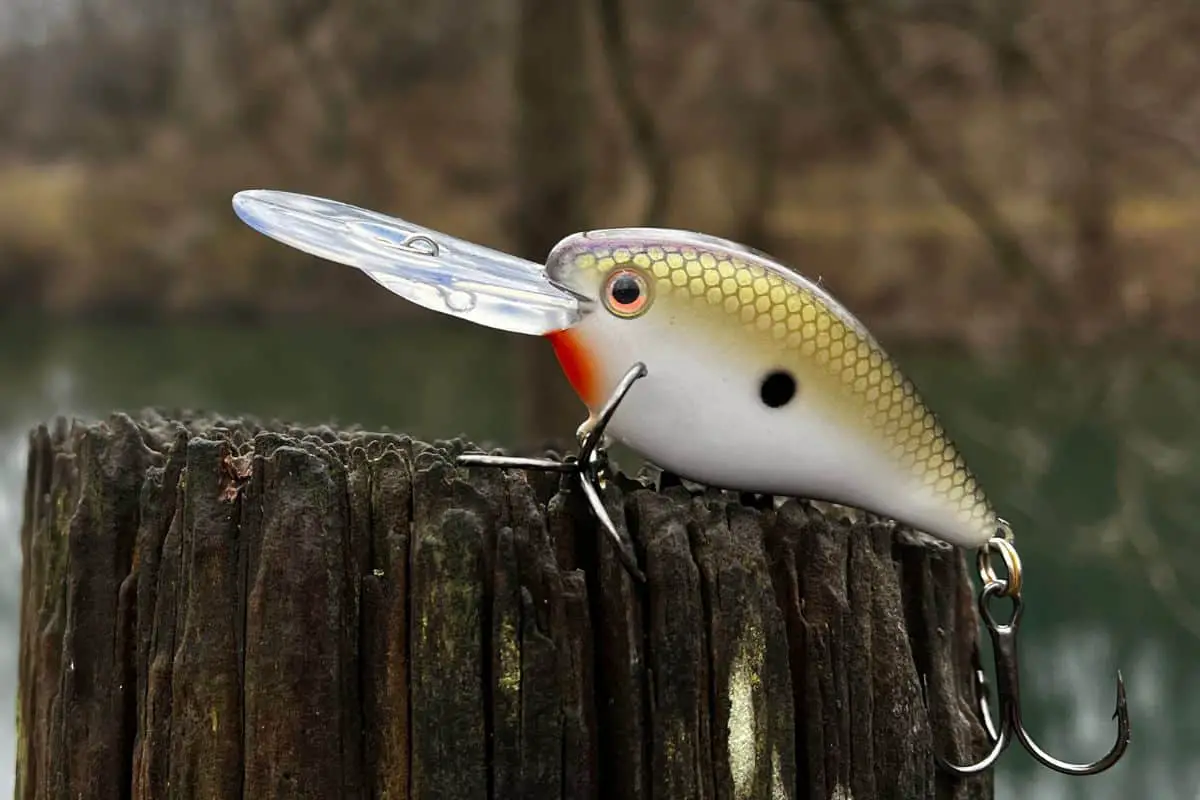Crankbaits take a lot of abuse. Banging into rocks, hitting stumps, and ripping through vegetation can cause the lure to swim crooked.
Tune a crankbait by grabbing the rigid line tie molded into the plastic with a pair of long nose pliers. Bend the line tie the direction you want the lure to go.
Small adjustments are better than making large changes to the lure.
How to Check the Crankbait to See if it is Running Straight
Most often, we suspect the lure is running crooked for a few casts before we decide to really check it out.
So how do we do that?
Cast the crankbait out and reel it back to you with the fishing rod pointing directly at the lure. In other words, the pole is pointing straight out from you and at the bait.

Many times anglers will try to check the tracking of the crankbait and hold their pole perpendicular to the retrieve. While this will work to a point, it doesn’t allow for recognition of the subtle changes in the lure path.
It is also a good idea to check how the lure tracks at a couple of different retrieval speeds. For example, squarebill crankbaits are highly effective lures when burned. Checking the tuning while reeling slowly is much different than the stresses and path the lure takes when brought back quickly.
(Here is an article on how to choose the proper crankbait rod.)

The Step-by-Step Process of Tuning Crankbait
First, grab a pair of long-nose pliers.
Second, move the split ring out of the way. You are going to adjust the rigid line tie that is molded into the plastic lip of the lure.
Third, slightly bend the line tie the direction you want the lure to go. If you want the lure to track to the right, bend the line tie to the right and vice-versa.
*Caution* It only takes the smallest adjustment to make a noticeable difference.
Fourth, cast the lure straight out in front of you. With the rod tip pointed at the bait, reel the lure back both slowly and quickly. See how it tracks. The lure should run straight all the way back.

Circumstances Where You May Deliberately Throw the Lure “Out-of-Tune”
There are situations where you may, and I emphasize “may,” want to throw the lure out of tune on purpose.
When anglers are casting parallel to structure, like a steep rocky bank or a bluff bank, it can be an effective technique to push the line tie towards the hard lake or river bed. When done properly, the lure will bang and deflect off the structure more often and lead to the potential reaction strikes that can be so powerful.
There are also times when there is extreme overhanging cover. It may be from brush that is reaching out over the water creating strong shade or even large dock systems. Floating docks would be a good example of this.

In these two instances, a crankbait that runs to one side can reach under the overhanging cover and get to bass other lures may not.
Remember, the slightest line tie adjustment will make a considerable difference in the lure path.
(Here is an article discussing when it is best to use flat-sided crankbaits.)
Check Every Crankbait Right Out of the Package
Quality control has improved a lot in recent years. There was a time when an angler could purchase ten of the same crankbaits and only a couple of them ran true right out of the box.
Today, there is a high probability all ten will track fine.
With that said, it is still a good idea to make a couple of “tuning” casts when you first tie on a crankbait. A quick check is all it takes and you can then fish with confidence.
Good luck out there and make sure to encourage someone today. You never know how you may change their life forever.
Isaiah 6:8

